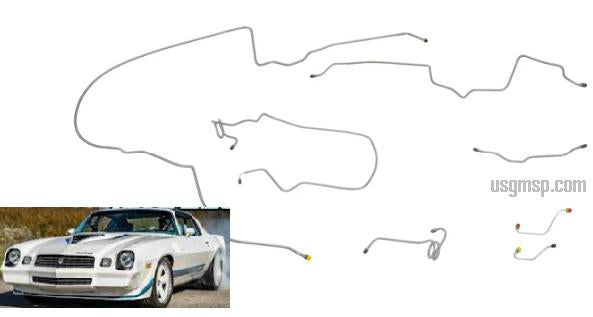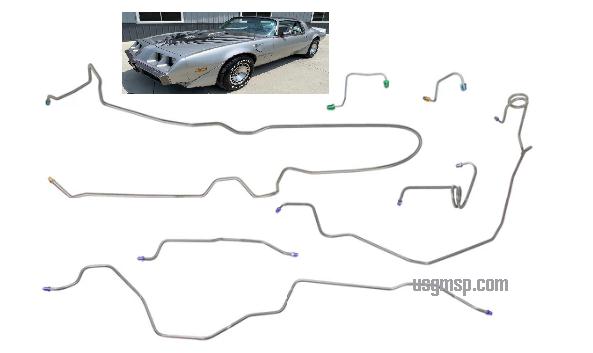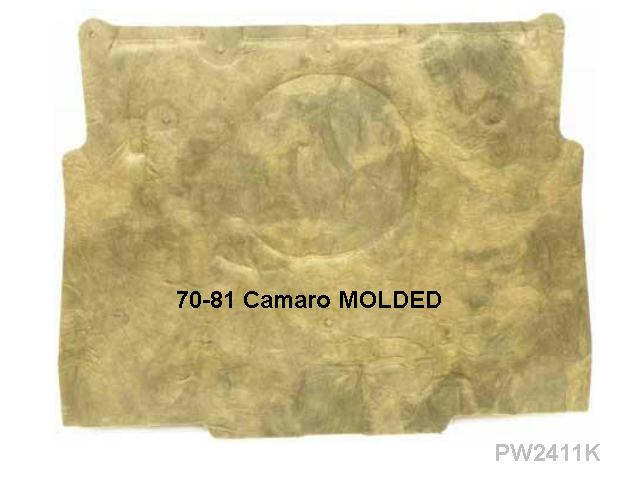1: HELP - BRAKE REPLACEMENT CHECK LIST
As an extra reference, this guide aims to assist users over time—remember, don’t simply attribute issues to a single part.
Don't have time to read this below ??.. but for instance have a suspected booster issue.. then at LEAST read this link to the USA suppliers MBMbrakes who supply this stuff all day every day...https://mbmbrakes.com/brake-booster-diagnostics/
Again.. its crook when your car will not start..but deadly when it does not stop.. seek proffessional help with brake work.
- Be aware your changing the factory Specified Brakes.. ones the car came with.. or that you think it did unless you owned it from the start or absolutely know its history etc. There can be legal complications in some states to do this. Check if in doubt.
- These brake systems closely replicate the original factory designs and are carefully matched to the precise specifications that GM engineers meticulously developed. For instance, the master cylinder is a faithful service replacement featuring the original cast iron bore and stroke, not an unrelated part from brands like Holden, Ford, or inexpensive chrome versions from overseas. Some units even retain GM casting numbers and are available in either polished or cast finishes.
- The booster is the same.. down to some of them if wanted having the GM Delco stamping ..they are more conveniently now provided in a stainless bling finish or black or copper type colour... AND depending on what your building.. or how much room you have around the RH or LH drive engine bay.. how big say the valve covers are ie on a BIG BLOCK.. if you need a longer but narrower booster.. say from 11 inch to 9 or maybe 8.. this can be done with a DOUBLE Diaphram booster usually at no more cost.. giving a lot of vacuum reserve in a narrower booster. This can be done here.
- Calipers often get hyped for their size or flashy features like alloy construction and red racing stripes, but their performance depends on having a master cylinder capable of delivering sufficient fluid volume under pressure. If the entire braking system—including calipers, hose sizes, booster, proportioning or limiting valves, and rear brakes—was engineered and tested together by manufacturers like Holden or Chevy, and installed as a complete factory-approved setup, that’s ideal. Otherwise, mixing components can create an unbalanced system, so exercise extreme caution.
- Calipers supplied are again GM Duplicate.. good size common enough pads.. bigger then say HQ.. built for about 16 years of GM late 60's to mid 80's cars..it was made to work with the master and proportioning valve supplied when you get the kit.. as are the hose's bore size.
- Rotors.. your getting GM service duplicate parts.. some if chosen are Slotted and drilled for a bit more grip under pressure.. but are again.. same design as factory.
Ultimately, faulty brakes are the last thing you want, as trial and error with braking systems can have serious consequences. Front disc brakes are generally more serviceable and provide better driving ease compared to drums. It’s important to respect the extensive engineering GM and other manufacturers invested in creating compatible systems. This is exactly the quality we provide.
Couldn't load pickup availability
As an extra reference, this guide aims to assist users over time—remember, don’t simply attribute issues to a single part.
Don't have time to read this below ??.. but for instance have a suspected booster issue.. then at LEAST read this link to the USA suppliers MBMbrakes who supply this stuff all day every day...https://mbmbrakes.com/brake-booster-diagnostics/
Again.. its crook when your car will not start..but deadly when it does not stop.. seek proffessional help with brake work.
- Be aware your changing the factory Specified Brakes.. ones the car came with.. or that you think it did unless you owned it from the start or absolutely know its history etc. There can be legal complications in some states to do this. Check if in doubt.
- These brake systems closely replicate the original factory designs and are carefully matched to the precise specifications that GM engineers meticulously developed. For instance, the master cylinder is a faithful service replacement featuring the original cast iron bore and stroke, not an unrelated part from brands like Holden, Ford, or inexpensive chrome versions from overseas. Some units even retain GM casting numbers and are available in either polished or cast finishes.
- The booster is the same.. down to some of them if wanted having the GM Delco stamping ..they are more conveniently now provided in a stainless bling finish or black or copper type colour... AND depending on what your building.. or how much room you have around the RH or LH drive engine bay.. how big say the valve covers are ie on a BIG BLOCK.. if you need a longer but narrower booster.. say from 11 inch to 9 or maybe 8.. this can be done with a DOUBLE Diaphram booster usually at no more cost.. giving a lot of vacuum reserve in a narrower booster. This can be done here.
- Calipers often get hyped for their size or flashy features like alloy construction and red racing stripes, but their performance depends on having a master cylinder capable of delivering sufficient fluid volume under pressure. If the entire braking system—including calipers, hose sizes, booster, proportioning or limiting valves, and rear brakes—was engineered and tested together by manufacturers like Holden or Chevy, and installed as a complete factory-approved setup, that’s ideal. Otherwise, mixing components can create an unbalanced system, so exercise extreme caution.
- Calipers supplied are again GM Duplicate.. good size common enough pads.. bigger then say HQ.. built for about 16 years of GM late 60's to mid 80's cars..it was made to work with the master and proportioning valve supplied when you get the kit.. as are the hose's bore size.
- Rotors.. your getting GM service duplicate parts.. some if chosen are Slotted and drilled for a bit more grip under pressure.. but are again.. same design as factory.
Ultimately, faulty brakes are the last thing you want, as trial and error with braking systems can have serious consequences. Front disc brakes are generally more serviceable and provide better driving ease compared to drums. It’s important to respect the extensive engineering GM and other manufacturers invested in creating compatible systems. This is exactly the quality we provide.






